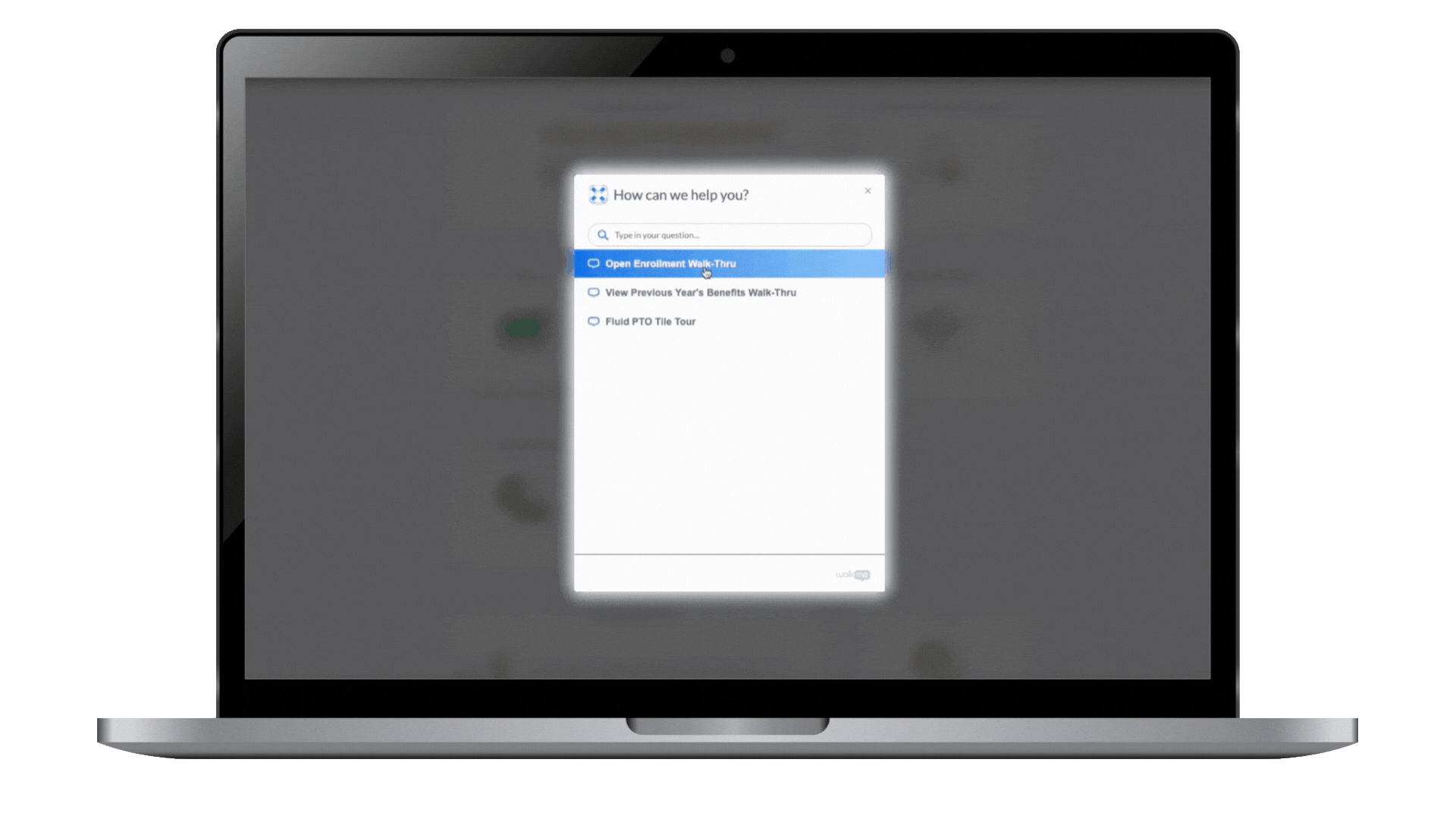DIGITAL ADOPTION & UX STRATEGY
HELPING ASSOCIATES NAVIGATE OPEN ENROLLMENT WITH CONFIDENCE
THE STORY
🔍 THE PROBLEM
Each year during Open Enrollment, employees struggled to complete their benefits selections in the company’s internal PeopleSoft HCM system. Despite it being an annual task, many forget the process entirely and found the system difficult to navigate.
Employees often started the task but had to reopen the system multiple times - sometimes 4 or more sessions - to complete open enrollment.
This created frustration, delays, and increased support tickets.
🎯 PROJECT GOAL
To reduce confusion and completion time during the annual Open Enrollment process by creating in-system, contextual support using WalkMe. The goal was to guide Associates through each step within the PeopleSoft HCM system - minimizing errors, repeat visits, and support requests - while empowering users to complete the task confidently and independently.
ROLE
As the Digital Adoption and Content Designer, I was responsible for:
Identifying key friction points in the Open Enrollment workflow
Designing in-system guidance using WalkMe
Creating just-in-time content what supported users during critical decision-making steps
Ensuring all content aligned with brand voice, accessibility standards, and legal requirements
PROJECT SCALE
1-2 Month Project
PRIMARY STAKEHOLDERS
Human Resources Team
TOOLS USED
WalkMe
Adobe Illustrator
Teams
💡THE SOLUTION
Using WalkMe, a digital adoption platform, I designed and implemented a layered support experience within PeopleSoft HCM. This included:
Step-by-step Smart Walk-Thrus that guided users through the enrollment process
Auto ShoutOut (popup) to let associates know they have in the moment guidance
Step-by-step Smart Walk-Thrus that guided users to find their previous years benefits for reference
Callouts and reminders (SmartTips) to prevent common errors or skipped steps
A tailored experience based on the user’s progress and role in the system
The content was designed to be non-intrusive, accessible, and easily discoverable; empowering users to complete enrollment without needing external help or documentation.
📊 THE RESULTS
The impact was immediate and measurable:
Associates who did not use WalkMe content required an average of 3.1 sessions to complete Open Enrollment
Associates who used WalkMe completed Open Enrollment in 1.1 sessions on average
The time to complete the task decreased significantly, and internal support volume was reduced during the Open Enrollment window.
SINGLE SESSION
User completion within one site visit
69.1%
COMPLETION RATE
Number of Associates that clicked Submit Enrollment without using any WalkMe guidance
71.1%
COMPLETION RATE
Number of Associates that clicked Submit Enrollment using any WalkMe guidance
TOTAL SESSIONS
User completion within one or more site visits
3.1
AVERAGE SESSION TO COMPLETE
Number of sessions it took an Associate to submit their enrollment without using any WalkMe guidance
1.1
AVERAGE SESSION TO COMPLETE
Number of sessions it took an Associate to submit their enrollment using any WalkMe guidance
💭 REFLECTION
This project served as a compelling demonstration of how intentional content design—paired with strategic use of digital adoption tools—can significantly reduce user friction and enhance overall productivity. By focusing on the user journey and anticipating potential pain points, the team was able to craft in-system experiences that were intuitive, informative, and seamlessly integrated into the workflow.
One of the standout outcomes was the implementation of contextual, in-the-moment support, which empowered users to find answers and complete tasks without needing to leave the platform or seek external help. This not only improved the user experience but also led to measurable time savings across the organization.
Importantly, the benefits extended beyond the end users. Human Resources and IT teams—often the first line of support for system-related questions—saw a noticeable reduction in support tickets and training requests. This freed up valuable time and resources, allowing those teams to focus on more strategic initiatives rather than repetitive troubleshooting.
In essence, the project highlighted how thoughtful digital enablement can drive efficiency, reduce operational overhead, and create a more empowered and self-sufficient workforce.
🔒 NOTE
**Due to confidentiality, brand names and visual content have been redacted. This case study reflects the design process and impact in a general context.


